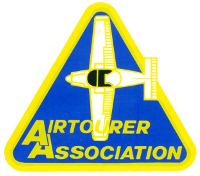Formation Element Landing
Ensure you have the Wing in the appropriate echelon position such that when the formation lands, Wing will be in the same position on the runway as for take-off. (This assumes the flight has been from and to the same airfield.)
From this position, Lead flies a circuit using standard circuit pattern techniques, but flies slightly wider than the normal downwind spacing. Approaching the downwind threshold, the lead will call for half flap then select the appropriate attitude to maintain level.
Finals technique used by Lead is the same as for a single aircraft, with the exception that the Lead should choose an aim point further down the runway (for example, at the 500 ft markers). This aiming point should be briefed. Flap is to remain at half for a formation landing, and a threshold speed of 75 to 80 kts is to be used.
Once the decision to land has been made, the Wing should start a cross reference scan that includes the runway. The Wing should maintain the echelon and vertical cues and line up on his/her half of the runway. The Lead will carry out a landing to his/her half of the runway using the displaced aim point.
Once over the threshold, the Wing should carry out an independent landing and use the wheel brakes, only if necessary, to remain behind the Lead during the complete landing run. If the Lead is not on the exit side of the runway, the Wing will call "[Callsign], Clear" when sufficient spacing and taxi speed has been achieved.
Both the Lead and Wing are responsible for their aircraft limitations and threshold maintenance.
At a controlled aerodrome, when receiving the formation landing clearance from ATC (such as "[Callsign] clear to Land"), only the Lead will respond with "Clear to land [Callsign]". Following aircraft in the formation are not required to make any call.
